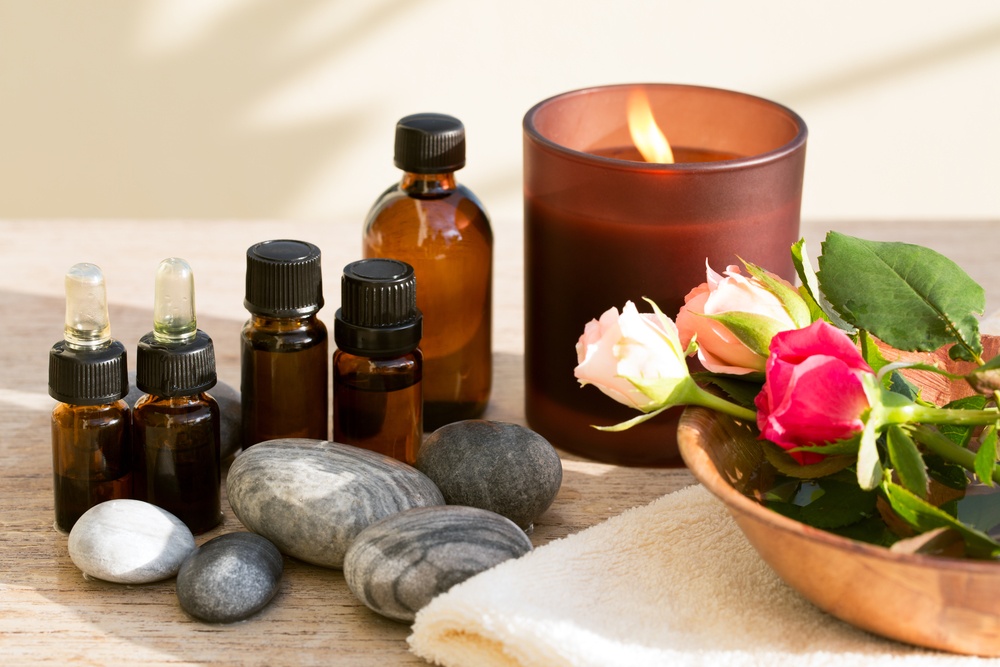
Essential oils are highly concentrated versions of the natural oils found in roots, leaves, stems, flowers or bark of plants. They are obtained by distillation of steam or water, resulting in a substance containing the plant’s true essence, fragrance and healing properties. These oils have been used for centuries for their therapeutic benefits, born out of the essence’s ability to protect against predators and disease.
Important Facts About Essential Oils
It’s important to note that not all “essential oils” purchased in stores are authentic products. Firstly, they aren’t the same as aromatic or “aroma” oils, which are perfume oils created artificially through a chemical process, while essential oils are a product of nature. Also, “pure” essential oils are typically single oils, rather than blends of different oils. Most oils are available in their pure essences, for people who want the health benefits from a particular plant. Blends are specifically designed to achieve a certain purpose, however, and can save the cost and effort of buying several oils and learning how to blend them for personal use.
How Essential Oils are Used in Aromatherapy
Humans have used plant extracts for therapeutic purposes since ancient times, but the term aromatherapy was coined by a French chemist in 1937 to differentiate medicinal use of oils from perfumery purposes. Aromatherapy is the science of using naturally-extracted aromatic essences to “balance, harmonize and promote the health of body, mind, and spirit.”
Patients use oils in different ways to benefit from their rich aromas and healing properties, including bottling, diffusing, or using them as a topical application to different parts of the body.
Aromatherapy for Migraine Relief
As the name suggests, aromatherapy is beneficial but not curative. While it can provide relief from a range of migraine symptoms, it is unable to stop migraine attacks. This makes it a useful symptomatic treatment, which complements traditional therapies and pharmaceutical care.
Migraineurs can use essential oils in various ways:
- Directly massaging them into the skin: Unadulterated oils are too strong for most bare skin, so dilute them with a carrier substance such as coconut, apricot or sweet almond oil. This will also make the oils last longer. Test the final product on a small patch of skin if you’re new to using them.
- Inhaling the oils: Add a few drops of pure essential oil or your chosen blend to a basin of hot water. Cover your head with a towel and inhale the steam. Drink water before you start to stave off dehydration during the process, and stop after five minutes to avoid becoming overheated. Another convenient method of inhaling the oils is to put a few drops on a tissue or a small cotton ball, which you can carry around with you and inhale whenever you feel the need.
- Soaking in oils: Forget commercial bath products—few things are as therapeutic as adding a few drops of essential oil to a bathtub and soaking in it for a while. Use oils earmarked for migraine therapies, and enjoy the sense of wellbeing that comes from the soak.
Scents released by the oils have a comforting influence on patients and help to relieve the stress and negative sensations that often trigger episodes of migraine.
Why It Works
For those who are skeptical about whether essential oils can possibly have an effect on migraines, here’s an explanation on why it works. Medical research has not yet been able to identify the exact cause of migraines. Doctors know it is more than a vascular condition, and that it involves a neurochemical process. It’s also common knowledge that behavior modifications can be tremendously helpful in both prevention and treatment of migraine. Add to this the fact that smell is a primary trigger for many patients, and it seems clear anything that works on the olfactory senses could have an impact.
The Best Essential Oils for Headaches
The wide range of essential oils available for use in aromatherapy includes several that are specifically known to affect headaches. The most commonly used oils are:
Rosewood
Derived from a beautiful tree grown in Brazil and used for multiple decorative purposes, Rosewood oil has a warm, spicy aroma with enlivening properties. It’s used to help depression, because it imparts feelings of happiness and strength, calms the mind and promotes hormone secretion. It also encourages relaxation, helps patients let go of mental stress, and aids blood circulation. Since depression, stress, and tension are all contributors to migraine pain, Rosewood oil’s ability to reduce these make it both a preventive measure and a therapy.
Lavender
This is the most widely-used essential oil in the world. Its properties were first discovered 2,500 years ago. Lavender oil is believed to be anti-inflammatory, muscle relaxing, sedative, anti-depressive, antibacterial, antifungal in nature, and some evidence shows its effect in treating neurological conditions. Used as a migraine therapy, it gives patients a boost and helps them stay functional. Other oils beneficial for treating depression disorders are orange blossom, mandarin and grapefruit.
Peppermint
This oil has been used for centuries to treat digestive problems, respiratory disorders and provide relief from headaches. A naturally-occurring hybrid of spearmint and water int, mentha piperita is a perennial herb native to the Mediterranean region that is now grown all over the world. Ancient textual references show it was used in herbal medicines since 1500 B.C., and is mentioned in Greek mythology. The active ingredients are menthol and menthone, the first of which is known to reduce pain, invigorate, and energize.
Researchers believe peppermint oil benefits migraine by helping to control blood flow in the body, and by opening up the sinuses for improved oxygen flow. In addition to using it in the ways listed above, it’s available in gel capsules, tea, incense sticks, and candy or other chewables. It’s particularly effective for sinus and tension headaches, so migraines triggered by those conditions are good candidates for relief. The stimulating qualities of peppermint could result in sleeplessness, so be careful not to overuse it.
Eucalyptus
This oil is steam-distilled from the leaves of the Eucalyptus tree, which is native to Australia but now grown worldwide. Around 75% of Eucalyptus sold comes from China, but much of this is made from camphor laurel instead of true Eucalyptus, so patients should ensure they are buying the right oil.
Eucalyptus has many powerful health benefits, including treatment of colds and flu, relief of muscular pain, and boosting the immune system. Its expectorant qualities and effect on blood pressure bring quick relief from sinus pressure, which can help migraineurs who experience episodes triggered by changes in barometric pressure.
Other Beneficial Oils
Other essential oils beneficial for migraine therapy are:
- Rosemary, which calms emotions and improves alertness,
- Chamomile, juniper, and marjoram, which help with poor relaxation and difficulty sleeping,
- Coconut, lemongrass, and jasmine, which are safe for almost everyone to use and promote a sense of wellbeing.
If your migraines are triggered by scents, consult an aromatherapist before using essential oils to find out how best to use them. Consult with your migraine specialist before you try the oils mentioned, and monitor your usage and results closely to determine whether these options work for you.


